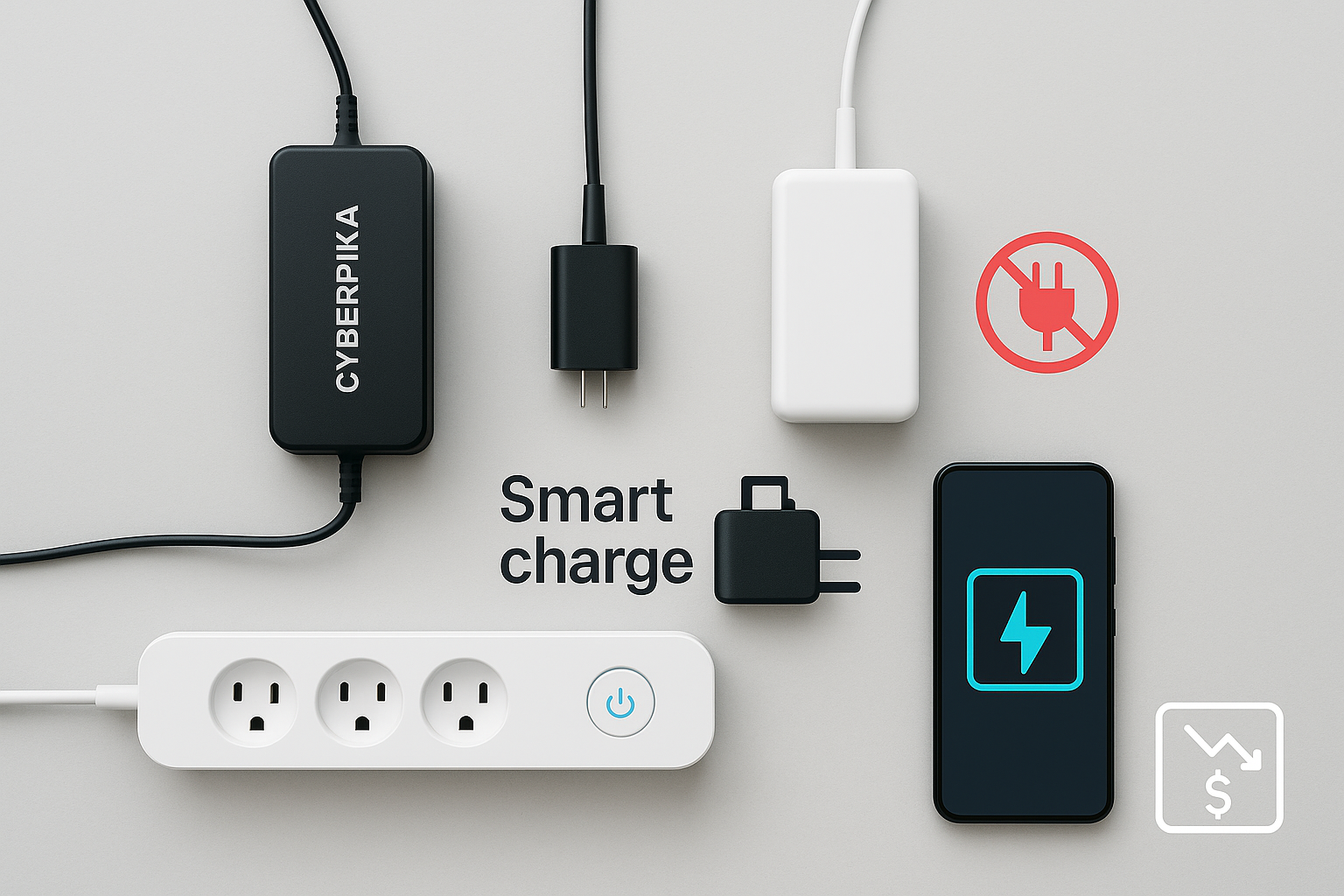In a world filled with e-bikes, smartphones, laptops, and smartwatches, our lives are more connected than ever. But all that convenience comes with a cost: a constantly plugged-in lifestyle can quietly drive up your electricity bill. While the cost of charging a single e-bike or phone is tiny, those pennies add up quickly across all your devices, every single day.
The good news? You don't have to unplug completely to save money. By adopting a few simple, daily habits, you can significantly reduce your charging bill and get more from your devices without sacrificing convenience. Here are 7 tips to make your charging routine smarter and more wallet-friendly.
1. Unplug Chargers When Not in Use
This is perhaps the simplest and most overlooked money-saving habit. You might think that a phone or e-bike charger isn't using electricity when a device isn't connected, but that's often not true. Many chargers draw a small amount of "phantom power" or "standby power" as long as they're plugged into the wall. This tiny, wasted energy adds up over a year.
Your Daily Habit: Get into the routine of unplugging chargers once your device is full. It takes just a second and can save you money over time. If you have multiple devices, consider a power strip with a master switch, so you can turn off the power to everything with a single click.
2. Charge During Off-Peak Hours
Many utility companies offer different electricity rates depending on the time of day. "Off-peak" hours, typically late at night or early in the morning, have lower rates because there is less demand on the power grid. "Peak" hours, often in the late afternoon and early evening, are more expensive.
Your Daily Habit: Check with your electricity provider to see if they offer a Time-of-Use plan. If so, make it a point to charge your e-bike, electric car, and other major devices during these cheaper, off-peak times. Charging your e-bike overnight is often the most convenient way to do this.
3. Don't Always Charge to 100%
For devices with lithium-ion batteries, like your e-bike, smartphone, and laptop, continuously charging to 100% can put extra stress on the battery's health over time. While it won't kill your battery overnight, it can accelerate its degradation, meaning a shorter lifespan and a need for a costly replacement sooner.
Your Daily Habit: For everyday use, aim to keep your devices charged between 20% and 80%. This "sweet spot" is the happiest state for your battery and can significantly extend its life. This habit saves you money by pushing back the date when you’ll need to buy a new e-bike battery, which is a major expense.
4. Let Your Battery Cool Down Before Charging
After a long ride or a heavy-duty task on your laptop, the battery will be a little warm. Plugging a hot battery into a charger can put unnecessary strain on the cells.
Your Daily Habit: After a vigorous e-bike ride, give your battery about 15-30 minutes to cool down to room temperature before you plug it in. This simple habit helps preserve the battery's longevity, again saving you money in the long run.
5. Use the Right Charger
Using an inefficient or incompatible charger can waste energy and, more importantly, damage your battery. An efficient charger is designed to convert more of the electricity from your wall into power for your battery, with less energy lost as heat.
Your Daily Habit: Always use the charger that came with your device or a high-quality, reputable brand-name replacement. Modern smart chargers, like those found with Bosch, Shimano, or innovative options like the Cyberpika Smart E-Bike Charger, are built for efficiency and safety. They help prevent wasted energy and protect your battery with intelligent features.
6. Maximize Natural Light (and Unplug Your Lamps)
While not directly related to charging, this habit significantly impacts your overall electricity consumption, making your charging costs a smaller part of a smaller bill. Most people have lamps or task lights that are used for reading or working.
Your Daily Habit: Open your curtains and blinds to make the most of natural daylight. When you don't need artificial lighting, unplug the lamps you're not using. Even when turned off, many lamps (especially those with dimmer switches) can draw a tiny amount of power.
7. Leverage Smart Plugs and Power Strips
If unplugging every single charger feels like too much of a chore, technology can help. Smart plugs and power strips with timers or remote controls can automate the process for you.
Your Daily Habit: Group all your media center devices (TV, game console, sound system) or your various phone/laptop chargers on a single power strip. At the end of the night, flip the switch to turn everything off at once. For an even more automated approach, use a smart plug to set a schedule so that power to your charging station is only on for a few hours a day.
The Big Picture: Small Habits, Big Impact
Saving money on your charging bill isn't about grand gestures; it's about making small, mindful changes to your daily routine. By unplugging chargers, choosing smart charging times, and protecting your expensive batteries, you're not just saving a few dollars here and there—you're making a long-term investment in your devices and your wallet. These simple habits create a compounding effect, proving that a little bit of effort goes a long way.


Share:
Smart vs. Standard Chargers: Where the Savings Come From
Off-Peak Charging: A Simple Guide to Scheduling Your Way to Savings